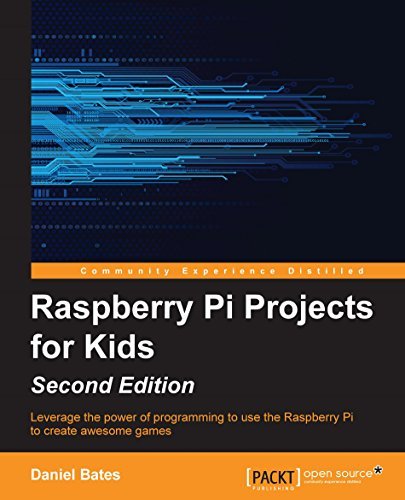What do you think?
Rate this book


The Raspberry Pi is a single-board mini computer designed to get more people (particularly children) interested in computer programming. It aims to make programming tools and educational programs as accessible as possible, making it very easy to get started with.
This book will guide you through six fun projects that show how programming can be used to be creative. Each project has clear step-by-step instructions and explanations helping children grasp the concepts easily.
You will start by setting up the Raspberry Pi and get to grips with the Scratch programming language to create simple animations. Gain and put to use your understanding of Python to write simple yet useful programs. Create and play a physical game by connecting it to the Raspberry Pi en route to become aware of a number of other possible uses for a very similar circuit/program. Finally, with an understanding of Sonic Pi, you will create your own music.
148 pages, Kindle Edition
First published January 1, 2014
Introduction to Scratch : This chapter is a nice introduction to Scratch. And I particularly loved the example project “Making Your Own Angry Birds Game” , which most kids will relate to (I mean even us Adults !)
Testing Your Speed : I thought this chapter was the best. It combined the Raspberry Pi with a little project to build your own Hardware controller out of the most simple pieces of stationery and wire. The hardware controller was then used to write a game in Python, the code working with the GPIO pins on the Raspberry Pi. If the kids get this chapter, I think they will have a riot of ideas and will be able to adapt this application to several other scenarios from daily lives.
Google Maps : The last chapter was an introduction to writing a program that integrates with Google Maps for your local area.
To use the projects in the book, it is important that you do have a Raspberry Pi with you, setup with an internet connection. I do not believe that the kids need to have a programming background to pick up stuff, though some of the Python code does require an experienced programmer to explain things to them. In my opinion, the ideal age for kids in this book is around the 10-14 age group.
Overall, this is a great book to introduce kids to Raspberry Pi and software/programming languages like Scratch and Python. I believe by mixing both hardware, graphical programming language and a text based programming language, it provides a flavor for everything to the budding programmer of tomorrow and is bound to help kids start thinking in multiple directions.